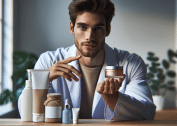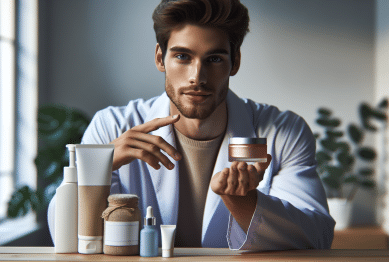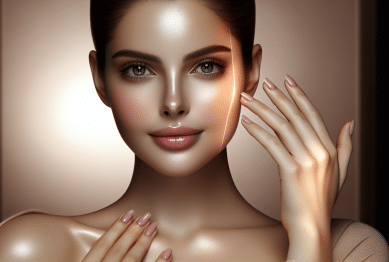Curious about why some people seem to always have radiant, glowing skin? Dive into this comprehensive guide on skincare routines, trending dermal treatments, affordable beauty options, and science-backed lifestyle tweaks that support beautiful skin from within. Discover tips and insights often overlooked in mainstream beauty advice.
Understanding the Glow: What Makes Skin Radiant
Many factors contribute to radiant skin beyond just genetics. Skin luminosity depends on a balance of hydration, cell turnover, and the healthy function of natural barriers. Effective skincare routines usually combine gentle cleansing, consistent moisturizing, and the thoughtful use of antioxidants. These approaches don’t just make the skin appear healthy—they also actively support its underlying structure and resilience. By paying attention to your skin’s specific needs, it’s possible to enhance luminosity in visible ways that last. Top dermatologists emphasize the role of barrier-protecting ingredients like ceramides and niacinamide, which help retain moisture and shield against environmental stressors.
Exfoliation is another key element in promoting skin radiance. Regular exfoliation—whether chemical or physical—helps remove dull, dead skin cells, revealing fresher, more vibrant layers beneath. This process supports healthy cell turnover and can visibly brighten the complexion. However, it’s important to choose exfoliants suited to your skin type, as harsh or excessive exfoliation may damage the skin’s barrier and cause irritation. Balanced routines foster a healthy glow without increasing sensitivity. Lifestyle factors such as sleep and diet also play a big role; nutrients like vitamin C and omega fatty acids help cells function optimally, supporting overall skin health.
Hydration shouldn’t be overlooked. Both internal and external hydration affect the skin’s appearance. Hydrating with water-rich foods and consistent fluid intake keeps skin looking plump, while topical moisturizers trap moisture where it’s needed most. Experts advise layering lightweight hydrating serums under richer creams if you live in environments with dry air. Even those with oily complexions benefit from hydration for maintaining the skin’s balance. The quest for glowing skin, therefore, is less about chasing trends and more about understanding core components: hydration, protection, and daily habits.
Curated Skincare Routines: Custom vs Universal
The idea of a “universal” skincare routine is a persistent myth. Every person’s skin is unique, influenced by genetics, environment, and daily habits. Dermatologists now recommend custom routines tailored to individual skin types—dry, oily, combination, or sensitive. Start by identifying your skin’s core needs: is it more prone to oiliness or dehydration? Does it often react to changes in weather or new products? Once you understand these basics, you can select cleansers, toners, and moisturizers formulated with ingredients to address those needs. For instance, sensitive skin may benefit from non-comedogenic products, while dry skin calls for deeper hydration.
Don’t underestimate the impact of targeted treatments. Serums containing ingredients like hyaluronic acid, retinol, or peptides offer focused solutions for common concerns such as fine lines, dark spots, or uneven texture. Consistency is key here. The most effective skincare routines are the ones followed diligently over time. Rather than chasing emerging trends, dermatologists suggest sticking to a manageable regimen that fits your lifestyle. Journaling skin responses to different products can reveal surprising insights about what really works for your complexion over months or seasons.
Customization doesn’t have to be expensive. Many affordable skincare options offer high efficacy—look for products that are fragrance-free, hypoallergenic, and formulated with scientifically supported actives. The principle of layering, or applying products in the right sequence, further optimizes absorption and efficacy. For example, serums go on before heavier creams, and sunscreen always comes last in the morning. Adapting routines based on changing skin needs—be it due to climate, stress, or hormonal cycles—ensures lasting results and fosters self-awareness in beauty care.
Dermal Treatments: Navigating Your Options Safely
Beyond daily skincare, many are curious about professional dermal treatments available in clinics or med-spas. Options such as chemical peels, microdermabrasion, and light therapy are in demand for good reason—they often deliver visible results where over-the-counter products may fall short. However, understanding what each treatment involves is essential for safe and satisfactory outcomes. Chemical peels help exfoliate and renew the skin’s surface, addressing concerns like hyperpigmentation or rough texture. Microdermabrasion mechanically removes dead cells for instant smoothness. These procedures require consultation to minimize risk and maximize benefit.
Light therapies, including intense pulsed light (IPL) and LED facials, are rising stars. IPL targets pigmentation and broken capillaries, while LED treatments can stimulate collagen and reduce redness. Although many of these treatments are available at reputable clinics, advances in at-home devices are also expanding access. Yet, not all devices are regulated or approved, so it’s wise to seek guidance from trained specialists or consult resources provided by dermatology associations before trying any new equipment. Aftercare is critical—failing to follow post-procedure protocols can compromise results or even harm the skin’s protective barrier.
Costs and benefits vary widely, depending on the provider and your individual needs. Some insurance plans may cover treatments deemed medically necessary, such as those for acne or severe scarring. However, most cosmetic procedures are out-of-pocket expenses. Reading reviews, asking for credentials, and clarifying all possible side effects helps people make informed decisions about these beauty investments. Individual skin responses can differ, so patience and professional follow-up are suggested after any intervention. A healthy skepticism—combined with curiosity—empowers more sustainable beauty choices.
Lifestyle Tweaks for Long-Lasting Radiance
Skincare isn’t the only factor impacting your skin’s health and glow. Daily routines like sleep quality, exercise, and nutrition have powerful effects. During deep sleep, the body increases cell turnover and releases growth hormones which help repair and regenerate skin. Lack of rest, on the other hand, can show up as dullness, dryness, and dark circles. Experts suggest prioritizing sleep hygiene—keeping consistent bedtimes, reducing screen time, and creating calming pre-sleep rituals for best results. Adequate hydration and a nutrient-rich diet also ensure every cell, including those in your skin, functions optimally.
Physical activity impacts skin by increasing blood flow and supporting lymphatic drainage. Movement helps flush out toxins, provides skin cells with more oxygen, and can even dampen stress-related inflammation. Outdoor exercise, with proper sun protection, offers additional benefits by encouraging vitamin D production. The connection between chronic stress and premature skin aging is now well-documented. Incorporating mindfulness, meditation, or gentle forms of movement like yoga may visibly improve skin by reducing cortisol spikes known to trigger breakouts or flare-ups.
Nutritional strategies also play a role in achieving natural radiance. Diets rich in antioxidants from colorful fruits, leafy greens, nuts, and seeds support cellular repair and prevent free radical damage. Omega-3 fatty acids, found in fish and flaxseeds, help maintain elasticity. If specific deficiencies are a concern, consulting a health professional for a tailored supplementation plan can make a difference. The take-home message: glowing skin isn’t just about creams or cleansers—it’s about whole-body wellness, inside and out.
Trending Ingredients and Myths in Beauty
It’s easy to be swept up by trending ingredients fueled by social media or celebrity endorsements. Hyaluronic acid, vitamin C, and retinol top the list of in-demand actives. These ingredients deliver proven benefits when used appropriately: hyaluronic acid for hydration, vitamin C for brightening and antioxidation, and retinol for cell turnover. Yet not every ‘trending’ compound is necessary—or safe—for all skin types. Doing a patch test and introducing new products gradually can help minimize adverse reactions. Dermatology organizations often publish unbiased comparisons between popular ingredients and less hyped but equally effective alternatives.
Some beauty myths persist despite scientific advances. One is the notion that ‘natural’ or ‘organic’ products are automatically better. While many plant-derived substances offer real benefits, natural-sounding ingredients may still trigger allergies or interact with medications. The reverse is true as well—many synthetic compounds are both effective and well-tolerated. It’s the formulation and concentration that matters more than the source. Researchers advise checking ingredient lists, understanding what each component does, and avoiding products with unsubstantiated claims or unclear labeling.
Sun protection is another frequently misunderstood area. Many believe SPF is only needed in direct sunlight, but UV rays penetrate clouds and even glass. Daily use of broad-spectrum sunscreen remains the gold standard for both beauty and health, helping prevent premature aging and skin cancer. Layering antioxidants with sunblock provides an added line of defense against environmental damage. Science-backed habits—over hype-based routines—deliver true, lasting benefits for skin clarity and glow.
Making Sense of the Beauty Market: Affordability and Efficacy
With countless products lining shelves, the beauty market can feel overwhelming. Price is not always a reliable indicator of efficacy. Many high-efficacy ingredients appear in both luxury and budget products. Reputable consumer organizations and health bodies regularly review ingredient lists and perform independent testing, helping people find quality skincare without overspending. Choosing multi-purpose products can also streamline routines and reduce costs. Patch testing inexpensive alternatives before full use further protects both skin and wallet.
Transparency in ingredient sourcing and testing is becoming the new gold standard. Brands that openly share clinical trial results or participate in third-party evaluations inspire more consumer trust. Look for internationally recognized certifications or approvals, such as those from dermatology or allergy foundations, as signals of product reliability. Fragrance-free, minimal-ingredient formulas tend to be both affordable and suitable for sensitive skin, providing beauty enthusiasts with budget-friendly options that don’t compromise on quality.
Community resources such as consumer reviews, dermatology association recommendations, and reputable health blogs provide invaluable guidance for sifting through marketing noise. Engaging with skincare forums or online communities can help individuals share their experiences and learn what affordable products have delivered noticeable results for others. Science-driven, transparent, and wallet-friendly beauty strategies empower anyone—on any budget—to achieve and maintain glowing, healthy skin.
References
1. American Academy of Dermatology Association. (n.d.). How to maintain healthy, glowing skin. Retrieved from https://www.aad.org/public/everyday-care/skin-care-basics/care/how-to-maintain-healthy-skin
2. Mayo Clinic. (n.d.). Skin care: 5 tips for healthy skin. Retrieved from https://www.mayoclinic.org/healthy-lifestyle/adult-health/in-depth/skin-care/art-20048237
3. Harvard Health Publishing. (n.d.). What can you do to have better skin? Retrieved from https://www.health.harvard.edu/newsletter_article/what-can-you-do-to-have-better-skin
4. Cleveland Clinic. (2022). How exfoliation can help your skin. Retrieved from https://health.clevelandclinic.org/skin-exfoliation/
5. National Institutes of Health. (n.d.). Sun safety and protection. Retrieved from https://www.cancer.gov/about-cancer/causes-prevention/risk/sunlight
6. Johns Hopkins Medicine. (n.d.). Healthy skin: A lifestyle approach. Retrieved from https://www.hopkinsmedicine.org/health/conditions-and-diseases/healthy-skin-a-lifestyle-approach









